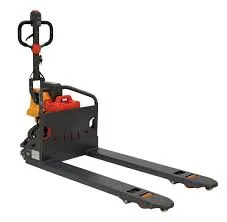


Understanding Chain Hoist Blocks Essential Tools for Lifting and Moving Heavy Loads
In various industries—from construction to manufacturing—efficient handling of heavy loads is crucial for productivity and safety. One of the essential tools used in this regard is the chain hoist block. This mechanical device provides a reliable solution for lifting and moving heavy objects with precision and control.
What is a Chain Hoist Block?
A chain hoist block, often referred to simply as a chain hoist, is a device that employs a chain mechanism to lift heavy items vertically. The main components of a chain hoist include a chain, a hook for securing loads, a suspension mechanism, and a ratchet mechanism that allows for controlled lifting and lowering. These devices can be operated manually or powered electrically, depending on the application and the weight of the object to be lifted.
Types of Chain Hoist Blocks
Chain hoist blocks come in various types, each designed for specific applications. The two most common types are manual chain hoists and electric chain hoists.
1. Manual Chain Hoists These require the user to pull on the hand chain to lift the load. Manual chain hoists are often more affordable and do not require a power source, making them a practical choice for smaller operations or where electricity is not readily available.
2. Electric Chain Hoists These are powered by electricity and can lift heavier loads with minimal physical effort. Electric hoists are equipped with safety features like overload protection and are ideal for repetitive lifting tasks, significantly improving efficiency in busy work environments.

Applications of Chain Hoist Blocks
Chain hoist blocks are versatile and can be used in various applications. Their primary role is in construction sites for lifting heavy materials such as steel beams, concrete blocks, and machinery. In manufacturing, they are often employed in assembly lines for moving heavy components. Moreover, chain hoists are also widely used in warehouses for loading and unloading goods and in theatrical productions for manipulating stage equipment.
Safety Considerations
While chain hoist blocks are invaluable tools for lifting, safety cannot be overlooked. Users must be trained in the correct operation of the hoist to prevent accidents. It is crucial to regularly inspect the hoist for wear and tear, particularly the chain and hooks, as damaged equipment can lead to catastrophic failures. Additionally, one should always adhere to the manufacturer's weight limits and guidelines to ensure safe operation.
Benefits of Using Chain Hoist Blocks
The use of chain hoist blocks presents numerous benefits. They allow for the lifting and movement of heavy objects with minimal effort, reducing the risk of injury among workers. These devices also enhance efficiency; tasks that would otherwise require several workers can often be accomplished by one person using a hoist. Furthermore, chain hoist blocks are durable and built to withstand harsh working conditions, making them a cost-effective solution for many organizations.
Conclusion
In summary, chain hoist blocks are essential tools in heavy lifting and logistics. Their ability to facilitate the movement of substantial loads safely and efficiently makes them invaluable to various industries. Whether opting for a manual or electric version, understanding the operation, maintenance, and best practices for safety will ensure that the benefits of using a chain hoist block are fully realized. As technology continues to evolve, so too will the innovations in lifting devices, but the fundamental principles of safety and efficiency will always remain paramount in the workplace.



